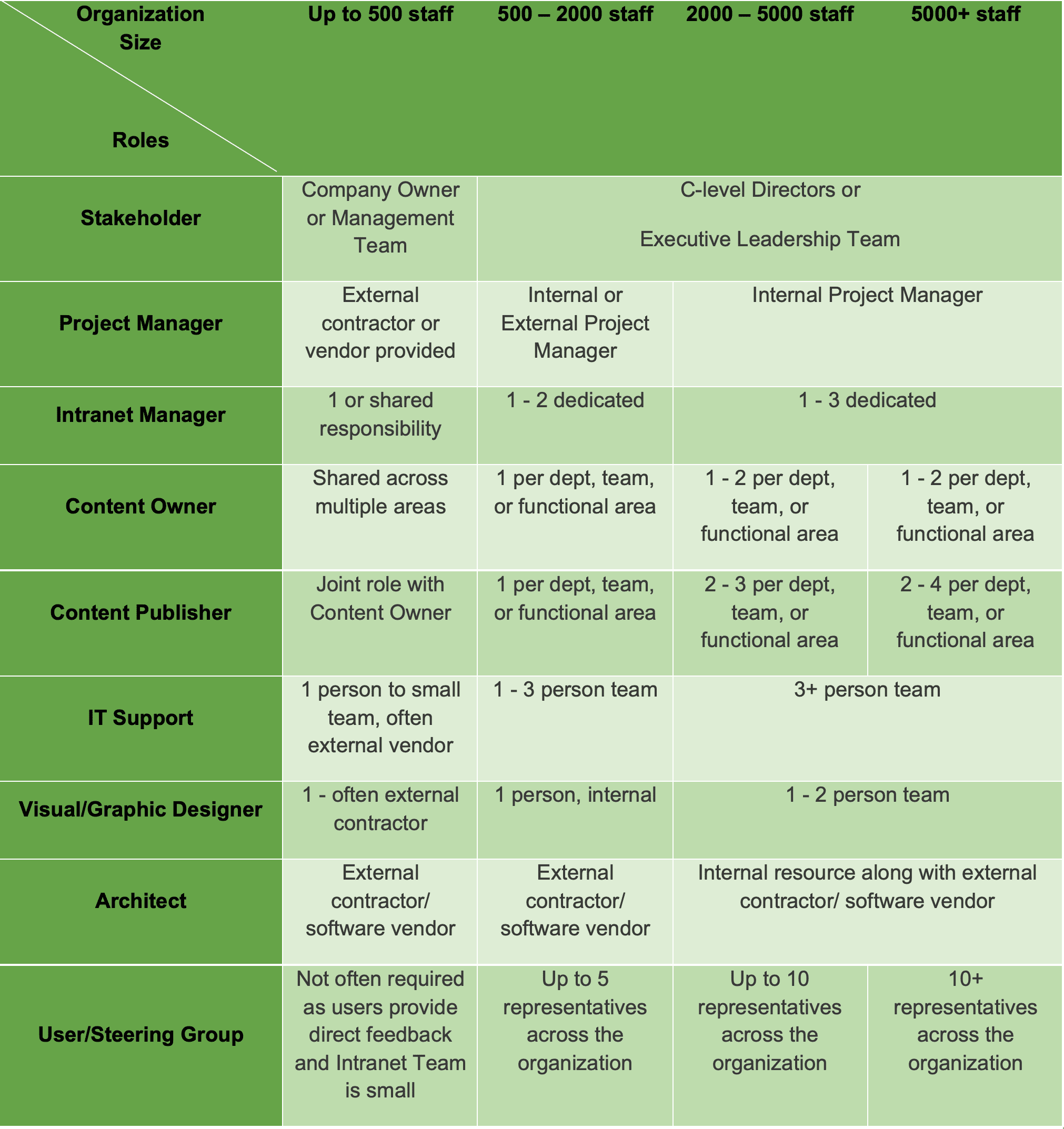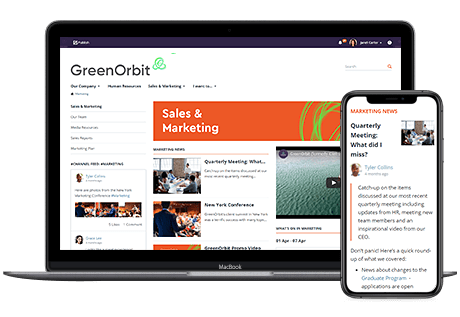
Getting representation and buy-in across the organization is critical to the success of the Intranet, from the time of the initial rollout as well as post-launch to ensure it remains a successful project. Creating the right team and defining responsibilities is at the core of ensuring this success.
In this blog article we talk about the roles that should make-up an Intranet Team. For more detail on the responsibilities of each role please download a more comprehensive document from our website here
The primary benefit of defining an Intranet Team is having a clear framework for governing the Intranet as a key business tool. By defining clear roles and responsibilities as part of your team, you are setting accountability and ownership for the various elements that are needed for a successful Intranet. Even once developed and launched, an Intranet should be seen as an ongoing project that is never truly finished.
This will vary from organization to organization, and no two are exactly alike. Available resourcing is often the major factor in determining the size of the team. Small to medium-size companies will often centralize the Intranet management to a handful of team members, or quite often just the one, and that person needs to wear many hats, taking on full responsibility for the Intranet as a whole. Larger enterprises on the other hand, will often have a dedicated internal communications, and or, marketing team which affords a dedicated full-time Intranet manager along with a team of content writers that can work effectively across all other areas of the business to ensure the timely updating and dissemination of content throughout the Intranet.
As we’ve mentioned, every organization will be different and as such the make-up of an Intranet team will vary. However, at a high-level these are the roles that should form part of your Intranet team. Depending on the size of your organization, individual team members may take on more than one role.
In most cases getting the buy-in on your Intranet project starts with the approval and backing of a key Stakeholder, or Stakeholders. In large enterprises this could be the C-level Directors or Executive Management Team, whereas for small companies this may be the Company owner or Senior Management. Having support from the top will ensure the project gets the resources needed to define the remaining roles.
Every significant Intranet project, whether rolling out an Intranet for the first time or refreshing an existing Intranet, should have a dedicated Project Manager. Their role will be to ensure all the resources that have been dedicated to the project meet their obligations on time and on budget. While they will not generally have an ongoing day-to-day role in the Intranet management or maintenance, their role is critical to the success of the project.
The Intranet Manager is the champion of the Intranet and the go-to point for the initial build and ongoing maintenance of the Intranet. Their goal is to ensure it remains relevant, up-to-date and engages with the staff as a critical tool the organization depends on.
A Content Owner is the subject matter expert, who is responsible for a department, team or function of the organization. Their role is to plan, source, and create content that should be available to staff via the Intranet.
In many cases the head of each department, team or functional area will be nominated as Content Owners as part of new Intranet projects or refresh projects. Although they may not actively write or source all of the content, they will delegate amongst their team the tasks necessary to collate all required content.
In many cases, especially with smaller organizations the role of a Content Publisher and Content Owner role may be performed by the same individuals. Alternatively, if the governance model is more centralized the Intranet Manager may be the publisher of content on behalf of the Content Owners.
Content publishers will require knowledge of the Intranet software, competence with content layout and formatting as well as ensuring the content is published in accordance with internal guidelines and processes.
The role of the IT Support Team will largely depend on the Intranet software and platform. In a Cloud based, SaaS (out-of-the-box) solution your internal IT Support Team will likely be involved at the beginning to assist with the setup and rollout of the new Intranet to users and then have a relatively small role to play with end user hardware and software support.
No matter the level of support that your IT Support team needs to play it is important that they are included in your Intranet Team and given a clearly defined role and responsibilities to ensure all technical matters or issues can be trouble-shooted quickly and unplanned outages of the Intranet are avoided whenever possible.
Visual impact plays a big part in communicating content to users on the Intranet. In many cases the Content Owners and Publishers are well versed in creating and publishing content for the Intranet but may not have the skillset to design graphic elements or shoot, direct and edit video content, etc. All these elements are important parts of making sure that a well-structured, and content rich Intranet is also visually pleasing and engaging. A Graphic/Visual Designer is typically called upon to assist with individual content pieces or as part of an Intranet Rebrand or Redesign project.
This role will often fall outside of the organization itself and can be fulfilled by an external consultant. The role of The Architect is to have an intimate understanding of the Intranet platform, the software or solution that powers the Intranet. The allows them to translate the requirements, structure, into a framework that the Content Publishers and Intranet Manager can work with to complete the build, or refresh, of the Intranet.
This is a group of ‘power users’ that will represent all users of the Intranet. The User or Steering Group are typically used to user test new features or proposed changes in order to provide feedback and can be consulted at regular periods of time to contribute new ideas, assess what is, or isn’t, working well as part of a regular review process. Setting up and consulting with this group helps ensure that the Intranet evolves in the best interests of both the users and the organization.
Based on the roles and responsibilities above what is a typical make-up of an Intranet Team, and on the organization size - here is a guide we have established on working with a large number of clients across varied industries:

